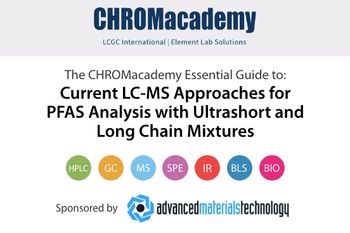
HILIC–MS/MS Quantifies Nereistoxin Insecticides in Foods of Animal Origin
The process was assisted by pH-dependent acid-base partitioning coupled with salting-out-assisted liquid-liquid extraction (LLE).
For the first time, say researchers Seung-Hyun Yang and Hoon Choi of Wonkwang University in Iksan, South Korea, an analytical method is being proposed for the simultaneous quantification of nereistoxin insecticides (NIs) and their metabolite, also called nereistoxin, in foods of animal origin such as beef sirloin, pork belly, chicken leg meat, milk, and eggs (1). For such an experiment, Yang and Choi devised a platform coupling hydrophilic interaction liquid chromatography to triple quadrupole mass spectrometry (HILIC–MS/MS), preceded by a salting-out-assisted liquid-liquid extraction (LLE) combined with pH-dependent acid-base partitioning.
Nereistoxin poses a serious threat to the food supply because it is a potent neurotoxin. Consumption of contaminated foods containing elevated levels of nereistoxin can lead to adverse neurological health effects, causing symptoms ranging from nausea to severe neurological conditions.
The authors’ study, published in 2022 in the journal Scientific Reports, builds on prior studies and methods used to analyze NIs, which bind to nicotinic acetylcholine receptors and cause paralysis to the central nervous systems of insects (1). Yang and Choi reported that NIs are illegally used to control insects in Korean livestock and poultry farms, thereby necessitating an approach for determining trace amounts of those unapproved chemicals in food products coming from farm animals.
Extraction of the NIs from the food samples, which were obtained from local markets in South Korea, involved a solution of acidic cysteine and formate buffer, with the molarity and pH of said buffer being optimized at 20 mM and pH of 3, respectively (1). This was done to keep the pH of the extracts, which were also hydrolyzed to nereistoxin, between pH 4–5. After decomposition, the researchers said in describing the salting-out process, the hydrolysate was adjusted to a pH of 5 by a 10 N solution of sulfuric acid with an addition of 10 mL of n-hexane to remove interferences. After mixing and centrifugation, the organic supernatant was discarded and the remaining aqueous layer was adjusted to a pH of 9 using 10 N of sodium hydroxide solution. Following a final addition of 6 g sodium chloride and 20 mL acetonitrile, further centrifugation left a new organic supernatant upper layer; this was the material analyzed by HILIC–MS/MS.
The researchers tested three different analytical columns, C18, HILIC, and Amide, which is a HILIC column with a trifunctional amide ligand. It was the last of these three columns, they said, which demonstrated the best performance. They lauded the selectivity, sensitivity, accuracy, and precision of this method of separation, citing column retention with relative standard deviation (RSD) of <0.6%, sensitivity with a method limit of quantitation (MLOQ) of 2 μg/kg, calibration curves with coefficient of determination (R2) >0.998, and repeatability with an RSD of <1% (1).
With an eye toward real-world applications, the authors said in conclusion that the HILIC–MS/MS method preceded by the highly specified extraction process described in their study stood up to European Directorate-General for Health and Food Safety (SANTE) guidelines for detecting NIs and nereistoxin in food samples derived from animals (1). They expressed hope that it could be put to official use in conjunction with existing legislation and safety regulations.
Reference
(1) Yang, S.- H.; Choi, H. Simultaneous Determination of Nereistoxin Insecticides in Foods of Animal Origins by Combining pH-Dependent Reversible Partitioning with Hydrophilic Interaction Chromatography-Mass Spectrometry. Sci. Rep. 2022, 12, 10208. DOI:
Newsletter
Join the global community of analytical scientists who trust LCGC for insights on the latest techniques, trends, and expert solutions in chromatography.




